The featured image and the one below were both taken from a boat on the Coorong-proper – Australia’s longest lagoon.
Both photos look across its waters to the Younghusband Peninsula – the dune field that separates the Coorong from the Southern Ocean.
Sand and water are the Coorong National Park’s key components.
The former arrives via wind, and Southern Ocean waves.
Most of the “fresh”-ish supply of the latter is delivered by the Murray-Darling river system.
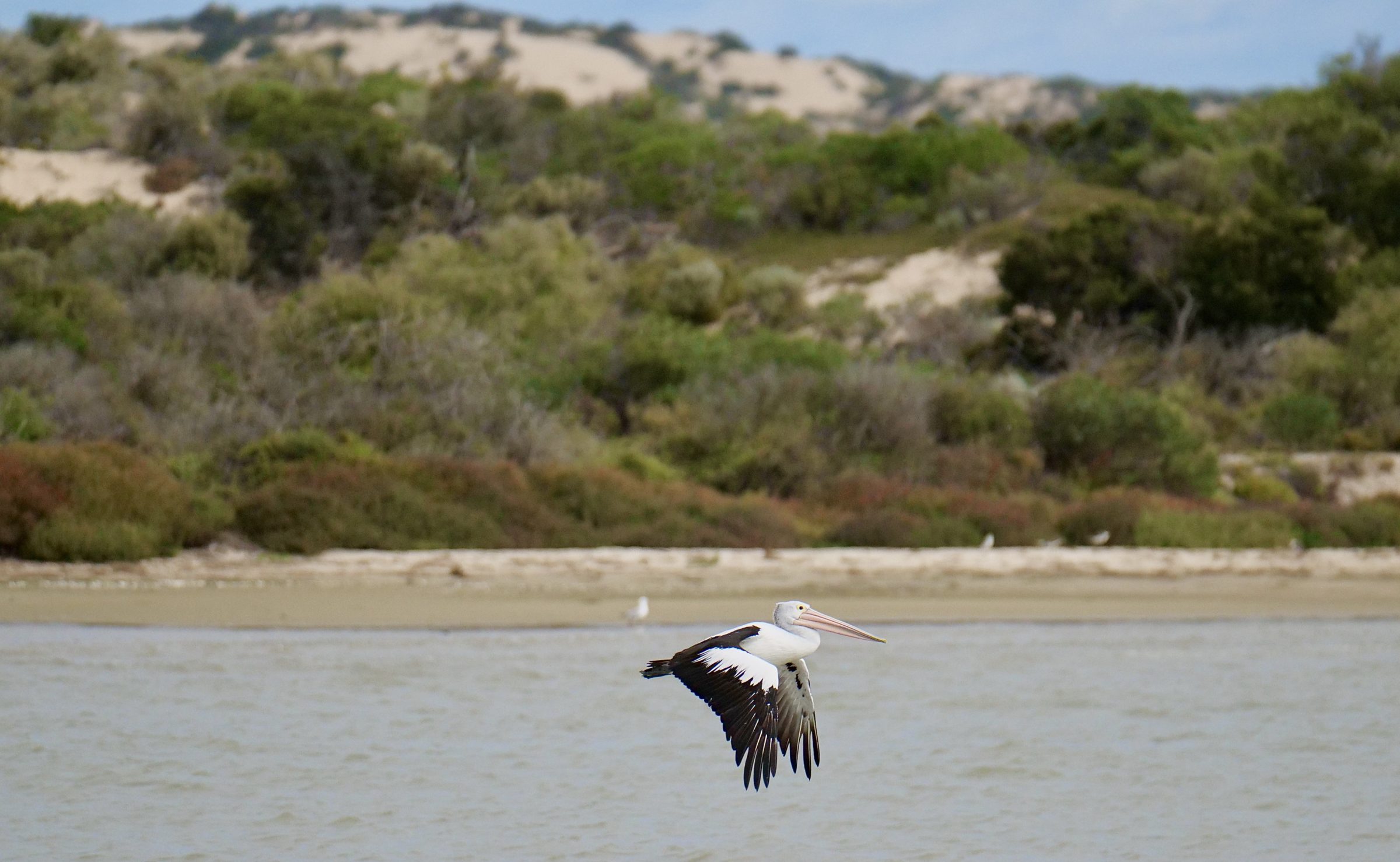
This post’s photos were all taken on 30 March 2022.
The next two images were also taken from “our” boat, but closer to the dunes.
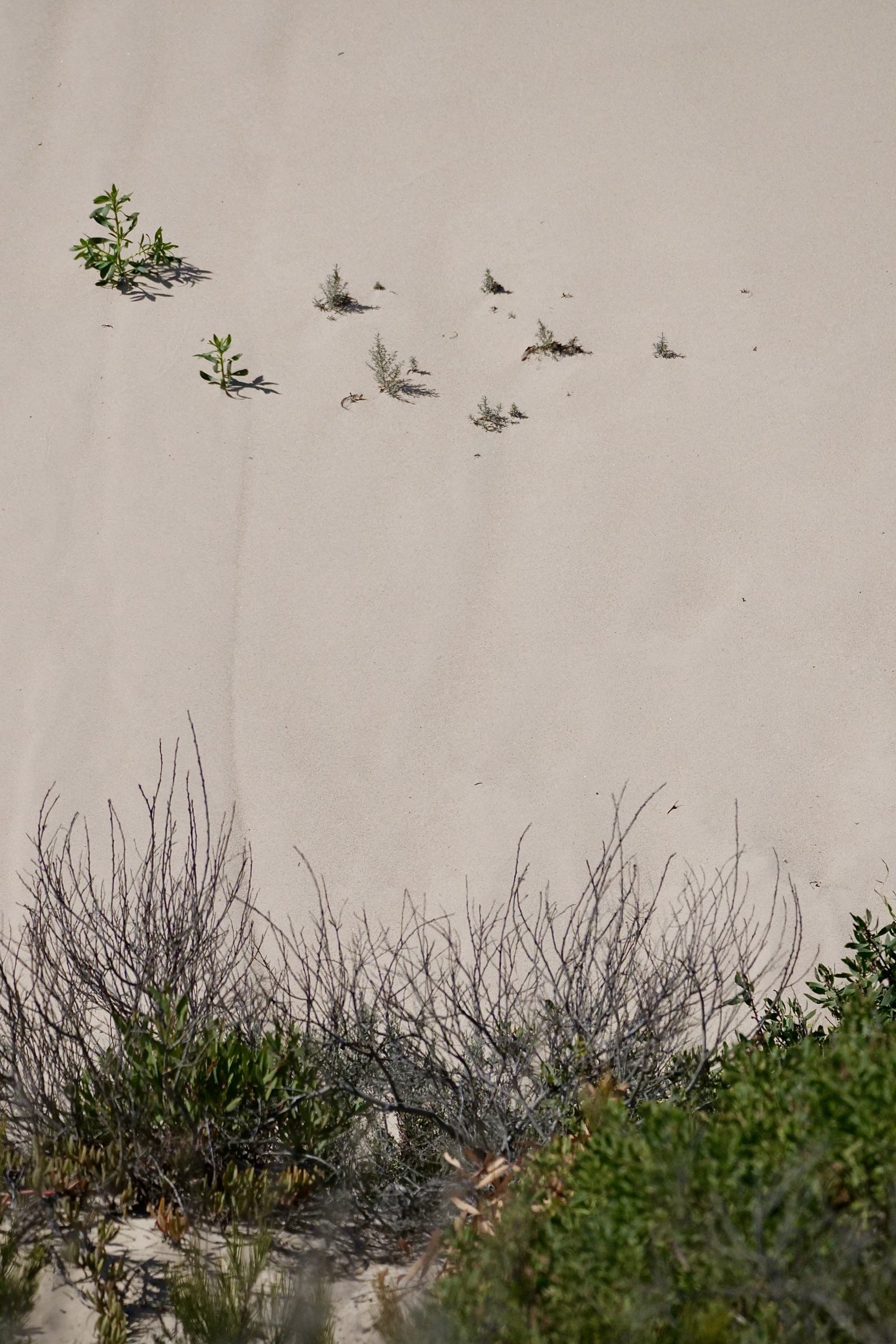
The image above begins just a little above the waterline, whilst the one below looks up, to where dunes meet sky.
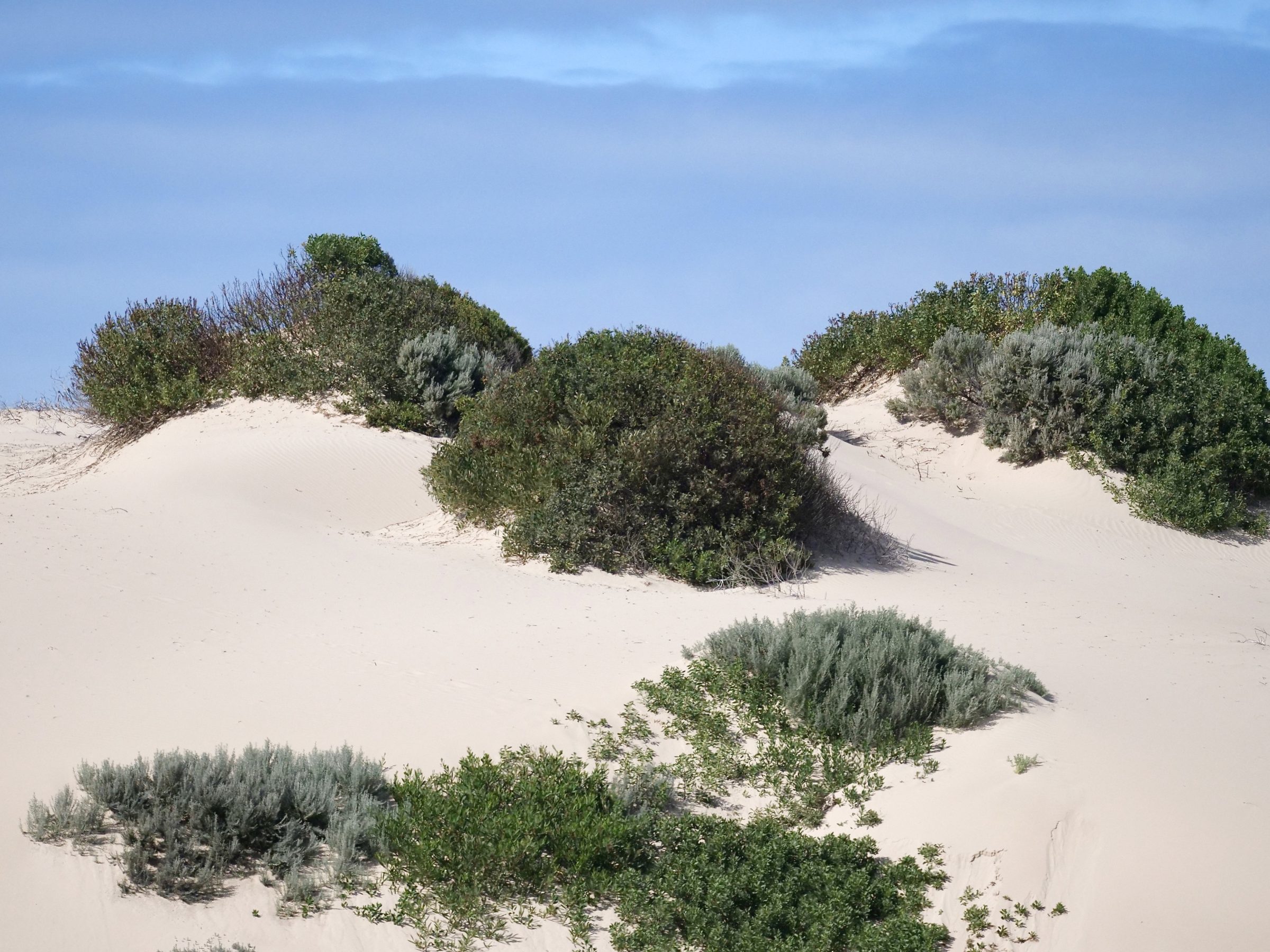
The remaining photos were all taken, on foot, on the peninsula.
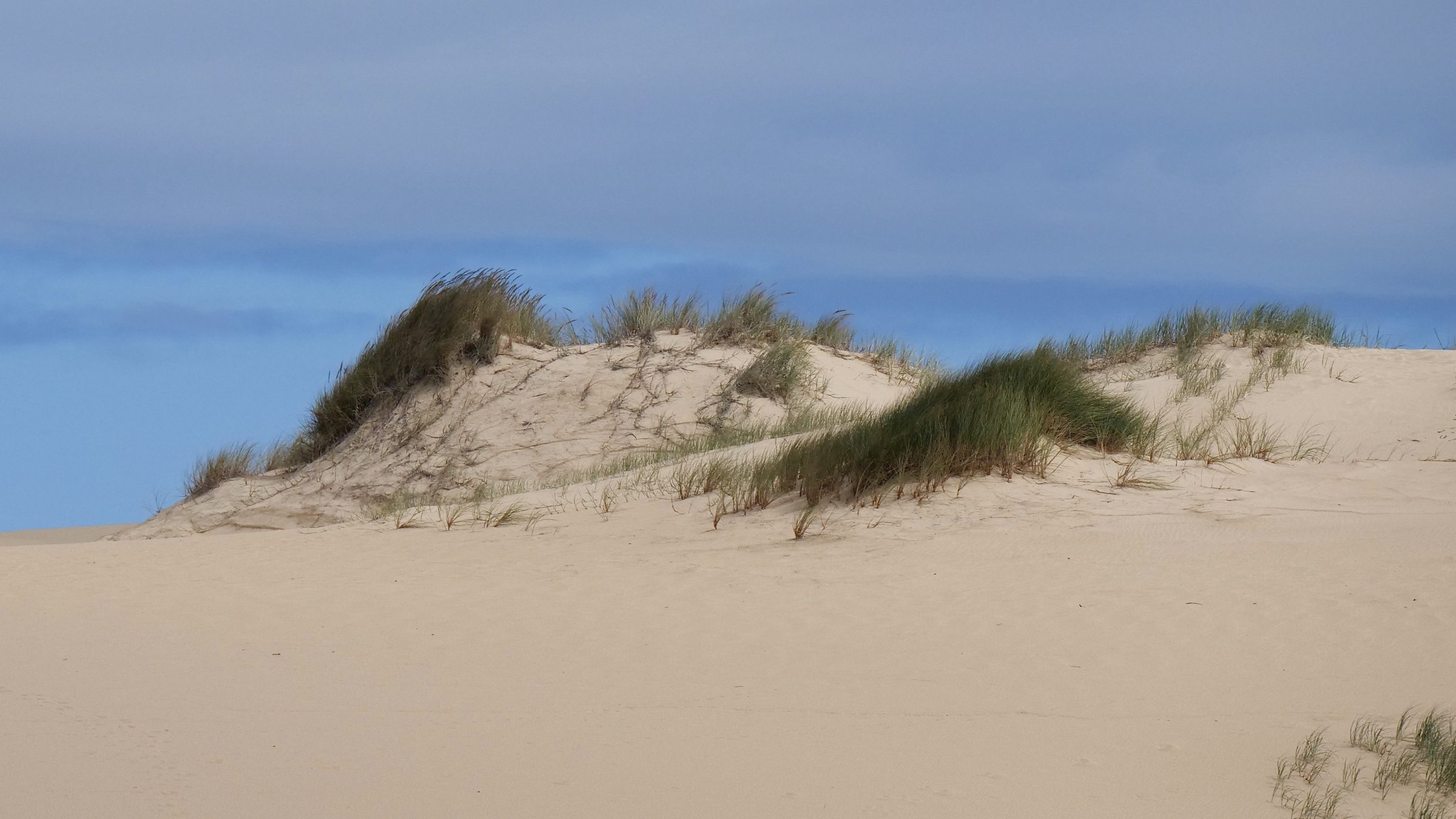
In 1949 vegetation covered just 7% of the Younghusband Peninsula.
In 2017 plants covered 40% of the peninsula.
Not unrelated was the trend over that period for the peninsula’s dunes to become more stable/less mobile and for more of them to become “parabolic” rather than “parallel”.
Scientific research has established that the key factor in this “good news story” was that over those years the rabbit population had substantially declined.
(during the same period the condition of the Coorong-proper was a much less happy story, most especially in terms of water quality and quantity. As with the rabbits’ introduction, their devastating impact, and then their “control”, the water story was also one of human intervention)
Post-1836, human activity has had a profoundly negative impact on the Coorong/Younghusband Peninsula/ Murray Lower Lakes ecosystem.
Whether current “corrective/protective” action proves “just enough, in the nick of time”, or “too little, too late”, is an “open” question.
It should be remembered that before colonists arrived in 1836, this then-unspoilt region had been one of the most densely human-populated parts of the Australian continent.
The Younghusband Peninsula’s many enormous middens are evidence of how its original humans had harvested and consumed “100 percent sustainable seafood” over thousands of years…in a land without rabbits, foxes, cats….
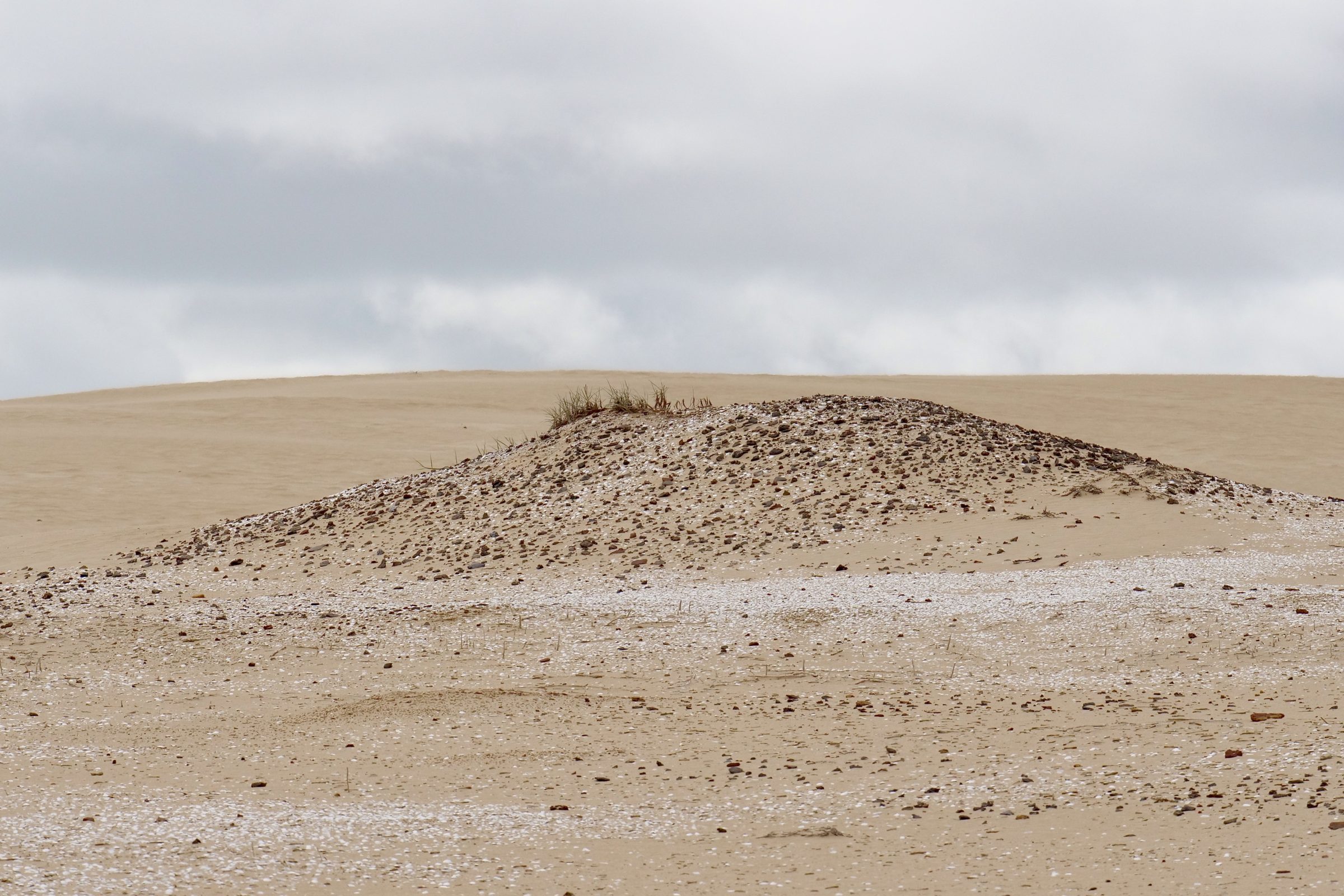
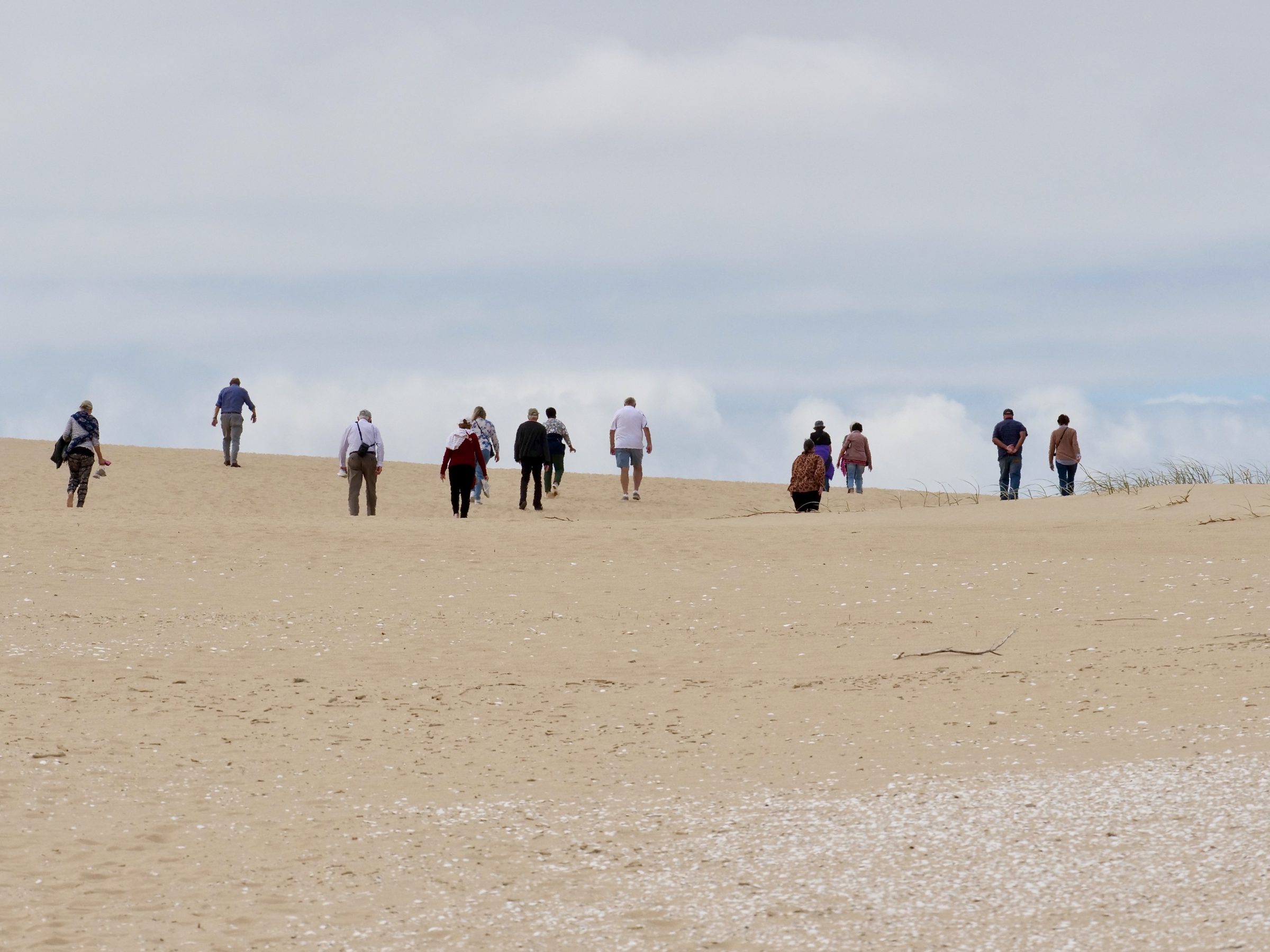
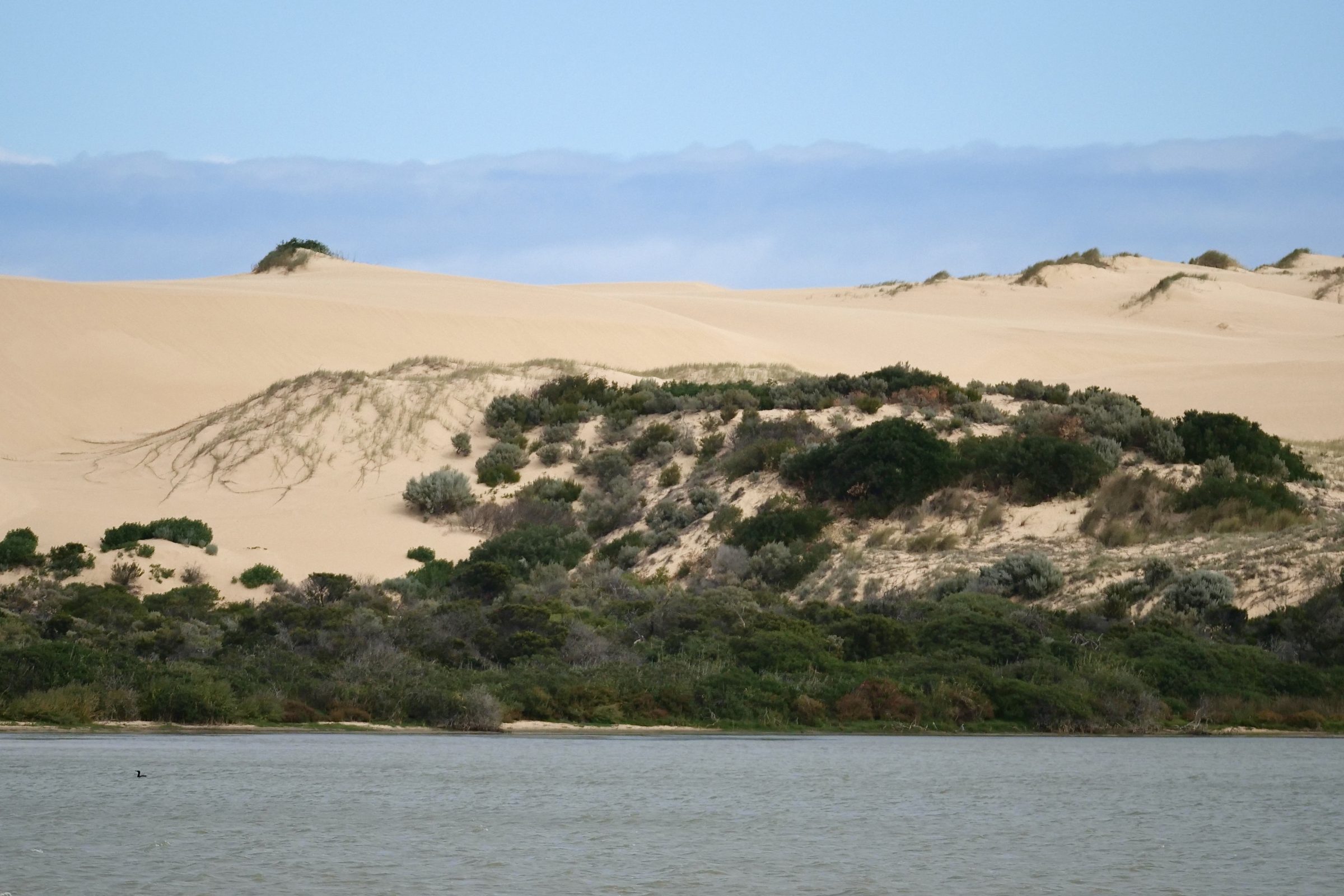
Glad you and your partner got to see the Coorong, Doug. It is one of our favourite places. Let’s hope this new government with the added impetus provided by the Greens and the Teals will improve the flows of the Murray Darling rivers and return the Coorong and the Murray mouth to a more balanced and sustainable state.